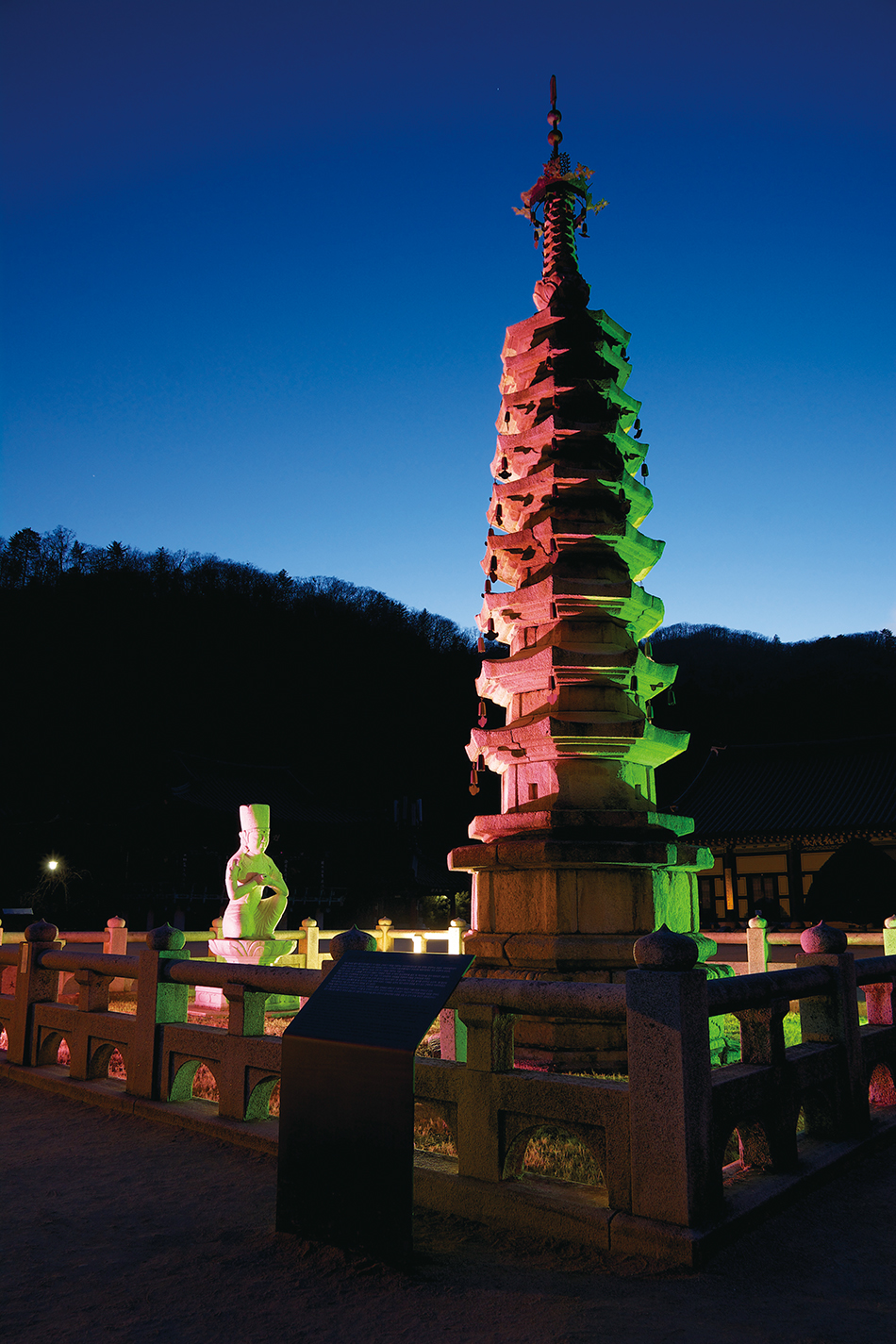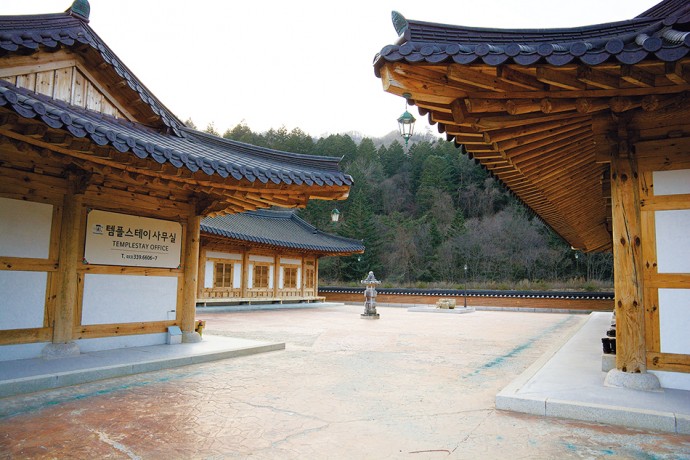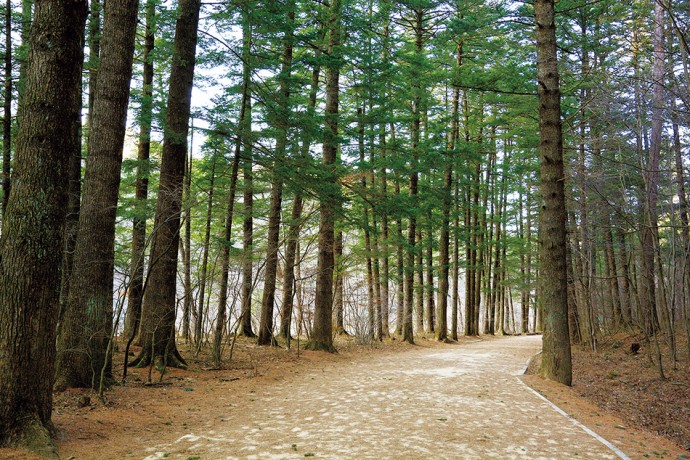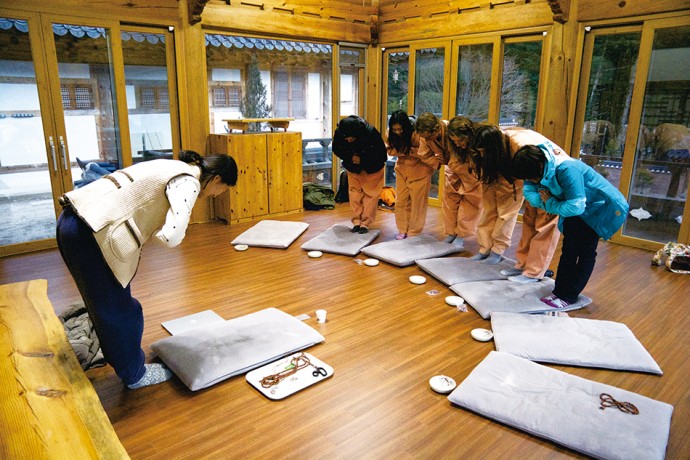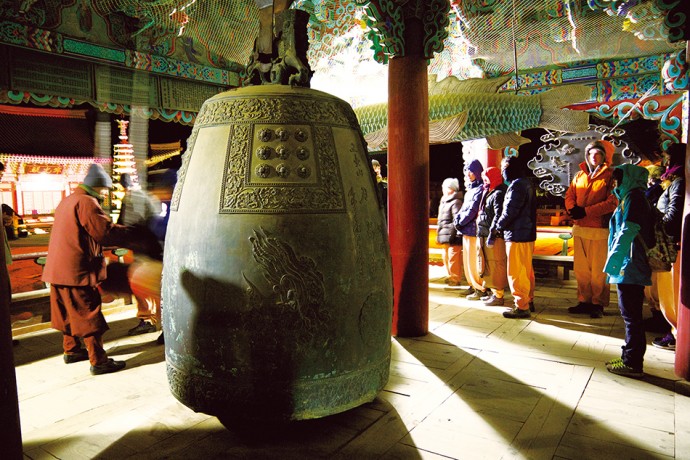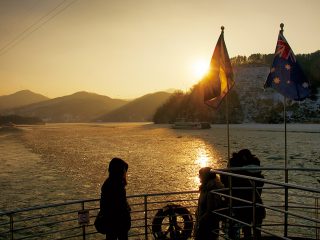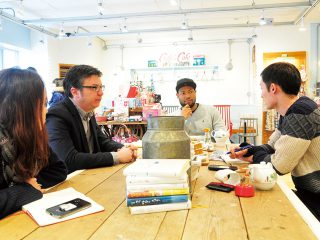Learn about the temple’s founder while learning about yourself
[dropcap letter=”S”]et in the national park of Mt. Odaesan, in the northeast of Korea, Woljeongsa Temple has a long history. It was founded in 643 during the Goryeo period by monk Master Ja Jang who, it is told, received a four-line poem from the Buddha after seven days of chanting in front of a statue of Munsu-Bosal (the Bodhisattva of Wisdom). The following day, disguised as a monk, the Bodhisattva translated the poem from Sanskrit, gave it to Monk Ja Jang and told him to go to Mt. Odaesan, promising that he would find 10,000 incarnations of Munsu-Bosal there. Mt. Odaesan is actually the old Korean pronunciation for China’s Mt. Wutai (in the Shanxi Province), believed by locals to be the residence of Munsu-Bosal. Seven days later, a dragon appeared before Monk Ja Jang, telling him that he had to build a temple dedicated to the Bodhisattva of Wisdom on Mt. Odaesan. The temple now stands where Master Ja Jang held his first camp when he arrived.Many centuries later, during the Korean War in the early 1950s, the temple was totally destroyed as opposing forces took refuge there. It has since been rebuilt entirely. In fact, Woljeongsa is not just one temple but a complex of several temples, shrines and tombs spanning 9 kilometers. The area is indeed one of the most beautiful and significant in Korean Buddhism.
Temple of natural and manmade treasures
The temple itself features a nine-story pagoda dating from the Goryeo Dynasty that displays a very peculiar design typical of the era. It has been officially registered as National Treasure No. 48, reiterating its historical significance. In front of the pagoda is a statue of a kneeling Bodhisattva making an offering. On the right of the entrance you will find a museum where the original statue is kept, along with numerous other historical documents, clothes and various historical assets. The main Buddha Hall is a large one. It contains a tall statue of the Historical Buddha, known as Seokgamoni-Bul, or Shakyamuni, painted in gold and framed by pillars adorned with complex dragons as a reminder of the holy figure that appeared to the temple’s founding master.
Just outside the temple, you can rest your mind in a fur pine forest. The main attraction there is a line of collapsed trees that have been carved empty by time and insects. Try finding the one that resembles a tall, heart-shaped stump.
The whole temple complex is bordered by a fast-running stream, exuding a relaxing sound while nesting abundant wildlife. You actually have to cross a bridge over the stream to access the temple’s main entrance, one that is decorated with the 12 animal zodiacs.
One program, different aims
Woljeongsa is a major temple and therefore attracts many Templestay visitors. Visitors can learn about the temple’s history while experiencing monk life, a chance to realize the depth and universality of Buddhist theory. Most Templestay visitors seek to experience Korean Buddhism as a chance to clear their minds in a calm and healthy environment, where you can meditate without distractions. Others have a more particular aim, like Janine, a Vietnamese-German exchange student, who learned about Buddhism from her parents but wanted to know the differences between her family’s sect (Vietnamese) and Korea’s Jogye Order.
Whatever your expectations may be, you will certainly experience something new and meaningful, such as the necklace of 108 prayer beads that you will make with your instructor.
Jeong Eun-yoo, the instructor for the day, explained the reason why they use exactly 108 beads. Each one represents an affliction you need get dispose of in order to walk the path of enlightenment. Apart from that, you can expect to sample of the Sounding of the Dharma instruments: cow-skin drum, wooden fish, cloud metal gong and the grand bell. Both the evening and morning services will open their doors to your inner self. Your instructor will lead you across temple grounds, explaining all relevant rules and history.
Indeed, Jeong has a very interesting history herself. She acquired her PhD in biology a couple of years ago, but, after volunteering at the temple for a month, she discovered the significance of her actions and decided to extend her stay by guiding Templestay visitors. She hopes that visitors realize the profound significance of each and every detail in temple life, whether it’s the food, the gestures, the services or temple architecture. Indeed, she seemed deeply touched by the philosophy of the place, and transmits her sincerity very intensely.
This temple will leave you with a very humble feeling of peace and respect for all things. Whether you want to escape the stress and noise of the city or have more spiritual goals, Woljeongsa Temple will show you a different, deeper path.
How to arrange a stay
To make a Templestay reservation at Woljeongsa Temple, go to eng.templestay.com and click “Reservations.” Scroll down and find Woljeongsa Temple. Follow the instructions on how to make a reservation.
woljeongsa.org.templestay_index.php
E-mail: woljeongsa1@templestay.com
How to get there
To visit Woljeongsa Temple, take a bus from the East Seoul Bus Terminal at Gangbyeon Station 강변역 (Line 2), to Jinbu Terminal, in PyeongChang. The ride takes about 2.5 hours and costs KRW 13,100. From there you can take a city bus, for KRW 1750. The ride takes about 15 minutes, and will let you off about 200 meters away from the temple, leaving you with a nice walk into your upcoming journey of reflection.[/box_info]
Written and photographed by Romain Boulesteix

